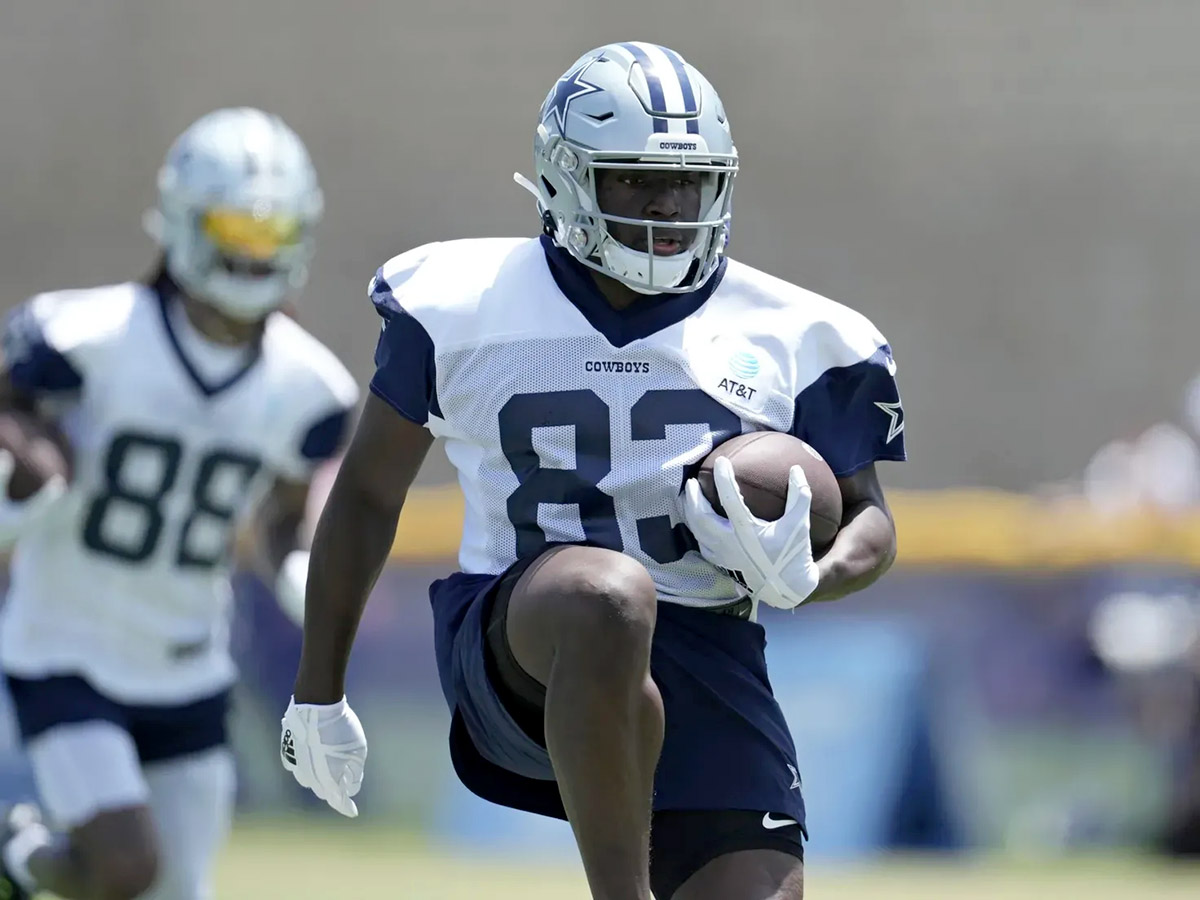

Finance
What Is The League Minimum Payment In The NFL
Published: February 27, 2024
Learn about the NFL league minimum payment and its impact on player finance. Understand the financial implications for athletes in the NFL.
(Many of the links in this article redirect to a specific reviewed product. Your purchase of these products through affiliate links helps to generate commission for LiveWell, at no extra cost. Learn more)
Table of Contents
**
Introduction
**
The National Football League (NFL) is a powerhouse in the world of sports, captivating millions of fans with its adrenaline-pumping games and remarkable athletes. However, behind the glitz and glamour of the NFL lies an essential aspect that often goes unnoticed—the league minimum payment. This fundamental component of the NFL's structure plays a pivotal role in ensuring fair compensation for players and maintaining the competitive balance within the league. In this article, we will delve into the league minimum payment in the NFL, exploring its history, factors influencing its value, and its broader impact on the league and its players.
The league minimum payment serves as the baseline compensation that NFL players are entitled to receive for their contributions on the field. It represents not only a financial guarantee for players but also a mechanism for promoting parity and fairness across the league. Understanding the intricacies of the league minimum payment is crucial for both avid football enthusiasts and those seeking insights into the financial dynamics of professional sports. Let's embark on a captivating journey through the evolution, determinants, and significance of the league minimum payment in the NFL.
**
History of the League Minimum Payment
**
The history of the league minimum payment in the NFL is a testament to the league’s commitment to ensuring equitable compensation for its players. The concept of a minimum payment for professional football players can be traced back to the early days of the NFL, albeit in a rudimentary form. In the league’s nascent years, player compensation was far from standardized, often varying widely based on individual negotiations and team resources. This lack of uniformity led to disparities in player earnings and raised concerns about the league’s overall financial structure.
As the NFL continued to grow in popularity and revenue, the need for a more structured approach to player compensation became increasingly apparent. In response to this imperative, the league introduced the concept of a minimum payment, setting a baseline salary that all teams were required to adhere to when signing players. This marked a significant turning point in the NFL’s evolution, as it laid the groundwork for a more equitable and regulated system of player remuneration.
Over the years, the league minimum payment has undergone several revisions and adjustments to keep pace with the changing landscape of professional sports. These modifications have been influenced by various factors, including collective bargaining agreements, inflation, and the overall financial health of the NFL. The continuous refinement of the league minimum payment reflects the league’s dedication to upholding fair labor practices and providing players with a stable financial foundation.
Today, the league minimum payment stands as a cornerstone of the NFL’s economic framework, embodying the league’s ongoing commitment to fostering a level playing field for all players, regardless of their experience or tenure in the league. The historical trajectory of the league minimum payment underscores its significance as a mechanism for promoting financial equity and stability within the NFL.
**
Factors Affecting the League Minimum Payment
**
The determination of the league minimum payment in the NFL is influenced by a myriad of factors that collectively shape the financial landscape of the league and its players. One of the primary determinants of the league minimum payment is the NFL’s collective bargaining agreements (CBAs), which are negotiated between the league and the NFL Players Association (NFLPA). These agreements play a pivotal role in establishing the minimum compensation thresholds for players, reflecting the collaborative efforts to ensure fair and competitive remuneration within the league.
Another influential factor is the league’s revenue growth, which directly impacts the financial resources available for player compensation. As the NFL’s revenue streams expand through broadcasting deals, sponsorships, and merchandise sales, the league minimum payment is subject to adjustments that align with the overall financial prosperity of the NFL. This dynamic relationship between revenue growth and player compensation underscores the interconnected nature of the league’s financial ecosystem.
Moreover, the league minimum payment is also influenced by the NFL’s commitment to promoting talent development and retention. By offering competitive minimum payments, the league aims to attract and retain skilled players, thereby sustaining the high level of competition and entertainment that defines the NFL. Additionally, the minimum payment serves as a mechanism for supporting emerging talent and incentivizing players to pursue careers in professional football.
Furthermore, external economic factors, such as inflation and market trends, contribute to the periodic adjustments of the league minimum payment. These factors necessitate regular evaluations of the minimum payment to ensure that it remains commensurate with the prevailing economic conditions and the standard of living. By accounting for these external influences, the NFL endeavors to uphold the purchasing power and financial well-being of its players.
Overall, the league minimum payment in the NFL is shaped by a complex interplay of collective bargaining, revenue dynamics, talent management, and economic considerations. Understanding these multifaceted factors is essential for comprehending the nuanced mechanisms that underpin player compensation in one of the most prestigious professional sports leagues in the world.
**
Impact of the League Minimum Payment
**
The league minimum payment in the NFL exerts a profound impact on various facets of the league, its players, and the broader landscape of professional football. At its core, the minimum payment serves as a safeguard for player welfare, ensuring that even the lowest-earning athletes receive a respectable level of compensation for their contributions to the sport. This foundational aspect of the league minimum payment underscores the NFL’s commitment to upholding fair labor practices and providing players with a reliable financial foundation.
Furthermore, the league minimum payment plays a pivotal role in fostering competitive parity within the NFL. By establishing a baseline compensation threshold, the league mitigates the risk of teams exploiting disparate salary structures to gain an unfair advantage. This, in turn, contributes to a more level playing field, where teams can compete based on skill and strategy rather than financial disparities. The resulting competitive balance enhances the overall appeal and integrity of the NFL as a premier sports organization.
From a player development perspective, the league minimum payment incentivizes aspiring athletes to pursue careers in professional football by offering a guaranteed minimum compensation level. This not only encourages talent cultivation but also contributes to the diversity and inclusivity of the player pool, enriching the NFL with a wide array of skills and backgrounds. Additionally, the minimum payment serves as a safety net for players navigating the unpredictable nature of professional sports careers, providing them with a measure of financial security as they strive to excel in their respective roles.
Moreover, the league minimum payment influences the broader economic landscape of the NFL, reflecting the league’s financial robustness and commitment to sustaining a thriving sports industry. By ensuring that players receive a minimum level of compensation, the NFL reinforces its position as a responsible and equitable employer, setting a positive precedent for labor standards in professional sports.
Ultimately, the impact of the league minimum payment extends far beyond its monetary value, resonating with the core principles of fairness, competition, and player well-being. As an integral component of the NFL’s operational framework, the minimum payment exemplifies the league’s dedication to fostering a sustainable and equitable environment for players to showcase their talents and contribute to the enduring legacy of American football.
**
Conclusion
**
The league minimum payment in the NFL stands as a testament to the league’s commitment to fairness, competitive balance, and player welfare. Its historical evolution reflects the NFL’s proactive approach to addressing the complexities of player compensation, culminating in a system that upholds equitable standards across the league. The league minimum payment is not merely a financial benchmark; it embodies the NFL’s dedication to supporting player development, fostering inclusivity, and maintaining the integrity of professional football.
As the NFL continues to navigate the ever-evolving landscape of sports economics, the league minimum payment remains a cornerstone of the league’s financial structure, adapting to the dynamic interplay of collective bargaining, revenue dynamics, talent management, and economic considerations. Its impact resonates throughout the league, influencing competitive parity, player development, and the broader economic landscape of the NFL.
Embracing the league minimum payment as a vital component of the NFL’s ethos underscores the league’s enduring commitment to promoting fairness, diversity, and sustainability within the realm of professional football. By recognizing the intrinsic value of the minimum payment, the NFL reaffirms its position as a trailblazer in sports governance, setting a precedent for equitable labor practices and responsible financial stewardship.
In essence, the league minimum payment transcends its monetary significance, embodying the values of integrity, inclusivity, and progress that define the NFL as a premier sports organization. As the NFL charts its course into the future, the league minimum payment will continue to serve as a beacon of equity and solidarity, enriching the fabric of American football and fortifying the legacy of the NFL for generations to come.














